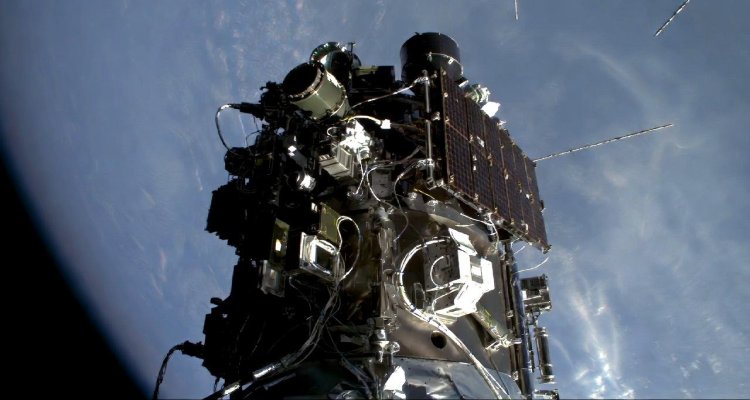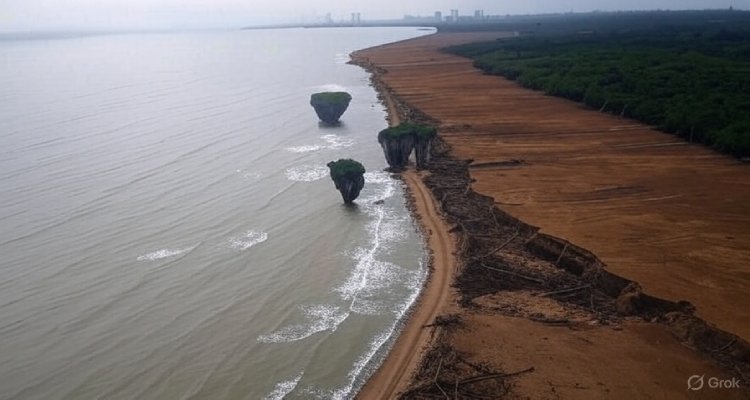Oceans Rising, Forests Falling: What the Data Tells Us About Earth’s Future
Rising sea levels and deforestation are reshaping Earth’s ecosystems. Here’s what the latest data reveals—and what it means for our future.
Oceans Rising, Forests Falling: What the Data Tells Us About Earth’s Future
The Planet’s Pulse: A Dual Crisis Unfolding
From the depths of melting glaciers to the dry stumps of ancient rainforests, Earth is sending a message. Oceans are rising faster than predicted. Forests are vanishing at alarming rates. These aren’t distant problems for tomorrow—they’re the current symptoms of a planet in flux. As new data sets pour in from global research institutes and satellite monitoring systems, a clearer and more troubling picture emerges: Earth’s natural balance is tipping.
Climate at a Crossroads: The Background You Need
Scientists have long warned of two intertwined crises: climate change and deforestation. Both feed into one another. Forests act as natural carbon sinks, absorbing CO₂ and moderating temperatures. Meanwhile, oceans absorb more than 90% of excess heat trapped by greenhouse gases. But these buffers are now overwhelmed.
According to the Intergovernmental Panel on Climate Change (IPCC), global sea levels have risen about 8 inches (20 cm) since 1900, with rates accelerating in the past three decades. Simultaneously, Earth lost over 11 million hectares of tropical forest cover in 2023 alone—equivalent to losing a forest the size of Cuba in just one year, reports Global Forest Watch.
The data isn’t just abstract—it’s predictive. It paints a future defined by submerged coastlines, displaced populations, vanishing biodiversity, and a heating atmosphere increasingly hostile to human life.
The Hard Numbers: What the Data Is Really Saying
- Sea-Level Rise: NASA and NOAA data show that global sea levels are now rising at a rate of 3.4 millimeters per year—nearly double the 20th-century average. By 2100, projections suggest an increase of up to 2 meters (6.6 feet) in worst-case scenarios.
- Melting Ice Sheets: Greenland and Antarctica alone are losing over 400 billion tons of ice per year. This melting contributes significantly to rising oceans.
- Forest Loss: The Amazon, often dubbed the “lungs of the Earth,” is approaching a tipping point. If deforestation surpasses 20-25% of the basin’s area, scientists warn the rainforest could collapse into savanna-like grassland.
- Carbon Emissions: Deforestation contributes nearly 10% of global carbon emissions annually—more than all cars and trucks combined.
Voices from the Field: What Experts Are Saying
“We are witnessing a planetary emergency,” says Dr. Jane Carrington, a climate scientist with the UN Environment Programme. “What the data confirms is what communities on the frontlines already know—our safety nets are unraveling.”
Meanwhile, ecologist Dr. Mateo Silva warns of cascading effects: “When forests fall, biodiversity collapses, weather patterns shift, and local economies suffer. Combined with sea-level rise, we’re looking at a full-spectrum ecological destabilization.”
Public sentiment is shifting, too. A 2024 Pew Research study found that 78% of global citizens now consider climate change a major threat, up from 64% in 2018.
What This Means for the World: Who’s at Risk and What Lies Ahead
Coastal Cities at Risk: From New York to Mumbai, major urban hubs are under threat. Over 800 million people currently live in coastal areas vulnerable to sea-level rise.
Agricultural Collapse: Forest loss reduces rainfall and depletes soil fertility. Combined with rising seas salinating freshwater sources, food security is under siege.
Biodiversity Crisis: Species extinction rates are now estimated to be 1,000 times the natural background rate. As habitats disappear, ecosystems lose their balance.
Climate Refugees: The World Bank predicts over 200 million people could be displaced by climate-related disasters by 2050.
The Path Forward: Solutions and Global Responses
Despite grim projections, global efforts are underway. The UN’s REDD+ initiative pays developing nations to preserve their forests. Technological advances in satellite monitoring, like NASA’s GEDI mission, are providing real-time data on forest health and carbon capture.
Countries like Costa Rica are proving it’s possible to reverse deforestation trends. Meanwhile, the Paris Agreement continues to press nations for emission reductions, though critics warn progress is too slow.
Individuals also play a role. Reducing meat consumption, choosing sustainable products, supporting reforestation efforts, and demanding policy action can collectively create systemic change.
Conclusion: A Future Still in Our Hands
The twin crises of rising oceans and falling forests are not separate—they are deeply connected chapters of the same story. The data is sobering, but it is also a call to action. We can either continue down a path of environmental collapse or rally globally to protect the systems that have sustained life on Earth for millennia.
The next decade will determine the planet’s future. What we do now will echo for generations.
Disclaimer: This article is based on publicly available scientific data and expert commentary. It is intended for informational purposes only and does not replace professional environmental consultation.











